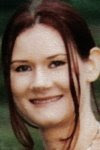 |
| Image by Brenda Clarke, via Flickr |
First Concepts
In Madison Lane and the Wand of Rasputin I began with the idea of a contemporary teenager (armed with an iPhone!) landing in a Renaissance-era-like world. When one of the plot twists turned out to involve quantum physics, I decided what I had here was Earth’s twin planet separated at “birth” but still quantum-entangled with Earth. I named it “Ground”.Time and Relative Location in Space (a.k.a. Cosmology)
Even though Madison Lane involves time travel, I decided that the sequences taking place on Ground would be occurring in contemporary time. Except that Ground is not as technologically advanced as Earth. Why? The answers to that question led me on a rabbit trail of worldbuilding.Let’s start with location in space. Earth and Ground are a great many light years apart, physically. It may be that Ground exists in a solar system with a sun that differs slightly from ours – it might be bigger, smaller, colder, hotter, further away, or closer. Any one of those options will produce differences in the planet that orbits it. I didn’t need to decide exactly for the first book, and maybe I’ll never need to answer those questions definitively, but it’s a lot of fun to contemplate.
Likewise, it’s possible there’s no moon, or two moons, three moons, little moons, bigger moons, moons closer or further away – those options will affect tides, the amount of moonlight, etc.
As for Ground, I determined that it had been spared some of the massive meteor strikes that Earth experienced (perhaps because its sun has less gravitational pull than ours or is slightly further away from Ground). We’ll come back to the meteor issue below.
Geomorphology and Geology
A cooler or warmer planet could theoretically affect plate tectonics. I decided that Ground didn’t have plate-shift to the extent that Earth did – making Ground’s continental structure the equivalent of Pangaea. This means that the inhabitants had less reason to build ships and sail off in conquest once they discovered they already knew, and traded with, all their neighbours. I also wondered whether Ground’s lack of industrial advancement was due to different mineral and metal composition, but decided it was probably more due to the inhabitants’ access to magic, which made them lazy.Fauna and Flora
Without the same meteor-related planet-wide resets, Ground got to keep its dinosaur and associated fauna for much longer, with the result that the evolution of some modern species was suppressed. The presence of huge carnivores at the top of the food chain meant that humans were not able to proliferate to the same extent as on Earth, giving Ground a much smaller population than Earth. Bigger land-dwelling dinosaurs were then eventually either hunted to extinction, or wiped out by a natural disaster that affected the land only. Because Ground currently boasts terrifying sea monsters (kronosaurs and plesiosaurs), and at least two species of flying monsters: the useful and docile ketzals (quetzalcoatlus) and nightmare-inducing banshees (pteradactylus).And I haven’t even touched on History, Social and Political Structure, and Magic(!), but this post is already rather long. If you’re worldbuilding – take whichever of the headings outlined here that apply to your story and sketch out some possibilities. Then look at your world as a whole and see which of those possibilities fit together. And have fun!
 |
| Elle Carter Neal is the author of the picture book I Own All the Blue and teen science-fantasy novel Madison Lane and the Wand of Rasputin. She is based in Melbourne, Australia. Find her at ElleCarterNeal.com or HearWriteNow.com |



Kudos to your imagination and creativity, Elle ... personally, I've always found this world bizarre enough, so I just work with that.
ReplyDeleteThank you, Christopher. Yes, there's plenty of story fodder in this world, if you want to stay here. I like to escape when I'm writing ;-)
DeleteSounds like a wonderful storyworld to visit!
ReplyDeleteThanks, Diana. It is. I wanted to create a place to escape to and enjoy, somewhere readers want to return to over and over. I'm not fond of the current dystopian trend. My influence as a child was the Narnia books and Alice in Wonderland.
DeleteSo far, I've confined my characters to good ol' terra firma. I know writers who create other worlds, populate them with fascinating creatures (humanoid and otherwise), and build multiple cultures in which to place their creations. I've even edited some -- and I have huge admiration for those who can do this. (Yes, I've read some superb fantasies, which is my preference over science fiction.)
ReplyDeleteI like to relax with Fantasy. SF takes an extra level of concentration and I need to be in the right mood for it. When I'm writing, I often start with what I think is going to be Fantasy and then start discovering scientific explanations for various aspects.
DeleteLots of stuff to consider to make a fictional planet believable.
ReplyDeleteThis is just scratching the surface ;-)
Delete